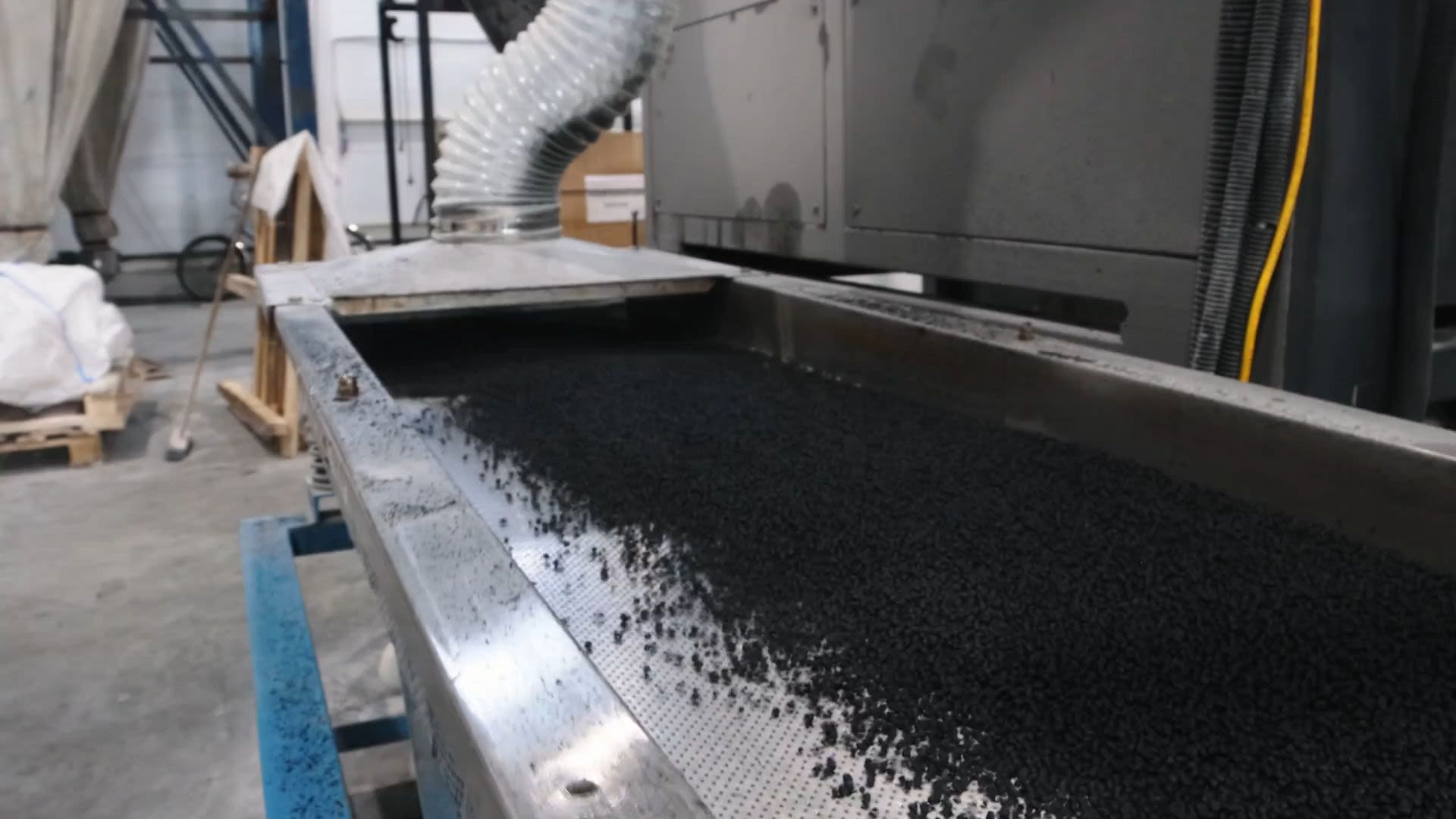New capacities and weak demand to cause global supply glut of PE/PP in 2023

A stream of new capacities coming online globally, particularly in the US and Asia, are set to significantly boost availability in the polyethylene (PE) and polypropylene (PP) markets at a time where global demand is lukewarm at best.
Though there are signs of improving demand in China following the Lunar New Year (LNY), interest in Europe and the US is low as ongoing economic concerns cause a slowdown in consumer buying.
As a result, there could be a global glut of PE and PP further into 2023.
A wave of new supply in Asia is threatening to upend the nascent demand recovery that the region has been experiencing since the end of the Lunar New Year holidays as new suppliers fight to establish their positions in an increasingly crowded market.
The new supply has essentially offset some of the reductions witnessed over the past few weeks due to heavy maintenance shutdown schedules for plants in the Middle East and Asia.
The increasingly intense competition between the new suppliers has already put some downward pressure on prices across southeast Asia, countering even some of the shortages that appeared after some Middle Eastern producers shut their plants for maintenance.
That has essentially snuffed out the initial demand recovery hit in the days following the end of the Lunar New Year holidays in the last week of February.
ANALYST’S VIEW
Asia PE demand to continue growth but rising supply poses threat
We expect Asia polyethylene (PE) capacity to reach nearly 62m tonnes/year in 2023, up by 8.3% year on year. China is still in a new capacity cycle in 2023. Within Asia-Pacific, noteworthy new PE capacity start-ups for 2023 are Vietnam’s Long Son Petrochemicals and Malaysia’s PRefChem plants.
Meanwhile, Asian PE demand will rebound in 2023 at an expected rate of 4.7%, mainly driven by the recovery in China demand.
China’s 2023 GDP growth target of 5% is expected to support its PE demand growth and the country has prioritised the recovery and expansion of domestic demand this year.
Packaging is the largest sector for PE downstream, accounting for more than 60% of China’s total PE demand. Therefore, rising demand in the packaging industry this year will be the key driving force behind growth in Chinese PE offtake, forecast at 4.9% in 2023.
With the reopening of China, the catering and tourism industries picked up at the beginning of this year. We expect that the continued recovery of physical shops and stores’ consumption this year will be one of the main drivers for packaging industry demand. And the continued development of e-commerce in rural logistics and distribution networks will also drive the increase in packaging demand.
PE demand growth in Asia-Pacific is expected to grow by 4.7% for 2023 as tourism makes a gradual comeback in this region.
India and Indonesia are expected to be the major demand drivers, as both countries focus on infrastructure and irrigation development. Packaging demand will also continue to grow in this region, but more moderately on growing inflationary concerns.
Economic growth, packaging keys to China PE demand recovery
China’s domestic PE prices rebounded after the Lunar New Year holiday, reflecting healthier downstream demand with the return of the labour force late in the first quarter and the upcoming peak season.
However, yuan-denominated prices remained weaker than expected as February approached, weighed down by new capacities coming on stream in south China and a lack of significant growth in terminal orders.
About 1.5m tonnes/year of new capacities started up in February 2023, according to the ICIS Supply & Demand Database. The data shows 700,000 tonnes/year more capacity expected to come on stream by the end of the first quarter, which may dampen domestic market sentiment for the second quarter.
Import supply is poised to increase at the same time.
A number of major plants in the Middle East will raise operating rates upon completing scheduled maintenance that started early in the first quarter, resulting in higher expectations for import supply from the Middle East in April.
The domestic market is likely to underperform because of ample domestic and imported supply. Coupled with fluctuations in the exchange rate for the yuan, this may lead to the postponement of buyers’ procurement plans.
Europe PE/PP market braces for possible flood of imports amid weak demand
Increasing global production and poor economic conditions leading to low demand in Europe are setting the stage for a weak year for polymers on the continent.
There has been less production in Europe following the high energy costs at the end of 2022. This could be combined with a possible reduction in operating rates or potential closures of ageing plants in the region if producers look to reduce overheads in a period of economic contraction.
However capacity expansions globally in 2023 are likely to cause a big excess in several countries and lead to more imports heading to Europe.
The improvement in global logistics mean that exporters are much more able to compete with domestic producers.
While some Chinese offers for homopolymer grades were seen for April deliveries, the focus is expected to be more on US imports, with transit time and duties making Chinese material less attractive in comparison.
The US is already a net exporter and new capacities coming on stream there mean there will be even more material available for the European market.
Domestic European supply has been tightening heading into the second quarter but demand is low, with any lack of availability expected to have a limited impact.
Demand is still well below historic averages and is likely to continue to be affected by poor economic conditions in the second quarter.
The rising cost of living has had a big impact on consumers in Europe and demand for polymers has dropped off as a result.
However, there has been a slight improvement in offtake every month so far in 2023, with March seeing an uptick compared with February.
In the PE market, buying interest for linear low-density polyethylene (LLDPE) and high-density polyethylene (HDPE) has improved the most, with spot prices seeing upwards pressure in March as a result.
Packaging demand has been steady at healthy levels, while that for durables such as household appliances has been weaker.
Luxury markets such as travel and hospitality may also be performing better than durables in markets such as Italy.
The automotive sector has seen an improvement so far in March, compared with poor performance in 2022.
While demand is increasing steadily so far in 2023, it is unclear if or when it will return to historical levels, with any significant improvement unlikely before the second half of the year.
ANALYST’S VIEW
PE margins to remain a key concern for European producers in 2023
PE production in Europe is expected to increase by around 3% in the first quarter of 2023 versus the fourth quarter of 2022, when operating rates were at the lowest for 2022 thanks to high production costs and weak domestic demand. European PE plant operating rates declined by almost 4% in the second half of 2022 from the first half.
Overall, European PE production is forecast to increase by more than 2% in 2023, while preliminary data for 2022 shows a 5% reduction in PE output versus the previous year.
PE production in Europe in 2022 has been hit hard by a reduction in margins due to increased production costs. Indeed, the past year has been characterised by significant volatility in European producers’ margins.
The production cost breakdown has changed for every resin. In 2019, feedstock costs accounted for more than 80% of the variable costs. But nowadays, energy-related utility bills are almost in line with feedstock costs, which is something unseen and in particular for European producers.
European integrated margins shrank greatly month after month during the first quarter of 2022, on the back of the conflict in Ukraine. The European market was then shocked by spikes in feedstock costs while polymer supply was hit by issues with logistics.
Consequently, European producers’ margins increased during the second quarter of 2022 but then declined in the third quarter on the back of falling PE prices as supply increased, in a context of weak demand in China. Meanwhile, domestic demand deteriorated with the weakening economy and rising inflation. Energy production costs also increased considerably, hence the output cuts in the second half of 2022.
ICIS analysts expect margins to be less volatile overall in 2023 but the strong increase in the global PE supply is forecast to boost import availability and put pressure on margins, mainly in the second half of 2023.
US PP/PE capacity expansions coincide with slowing demand
Recent capacity increases for PE and polypropylene (PP) in the US are set to significantly expand availability, while demand is likely to remain sluggish in the short term.
Consumption has been weak, with lower US manufacturing activity and widespread recession fears. This is expected to continue into the second quarter of the year.
ExxonMobil announced the successful start-up of a new 450,000 tonne/year PP plant in Baton Rouge, Louisiana, in November 2022, while Heartland Polymers’ propane dehydrogenation (PDH) unit at its Alberta facility in Canada began operations at the end of 2022.
While Heartland Polymers has been running its 525,000 tonne/year PP plant for some time now, the plant has been at low operating rates while waiting for the PDH unit to start up. Now that the PDH plant has started up, the PP unit can increase operating rates.
Overall, the PP industry is adding just under 1m tonnes/year of new capacity in the first half of 2023, during a period of falling demand.
In the third quarter of 2023 there is a planned capacity expansion of 50,000 tonnes/year at Flint Hills Resources’ Longview plant in Texas.
This will be followed by the addition of Formosa Plastics’ new 250,000 tonne/year unit in 2024, start-up for which has been pushed back from 2023.
The second wave of new US PE capacities will likely conclude in 2023, with Bayport Polymers expected to start up its new 625,000 tonne/year PE plant in the first quarter, while NOVA plans to start up its new 450,000 tonne/year plant in first half of the year.
Late in 2022, Shell started up its new 1.6m tonnes/year PE plant in Monaca, Pennsylvania, while Gulf Coast Growth Ventures, a joint venture between ExxonMobil and SABIC, started up a 1.3m tonne/year PE plant in Portland, Texas, in late 2021 and early 2022.
Altogether, these expansions will add just under 4m tonnes/year of new PE capacity to North America at a time when both the US and global markets are slowing in the face of weaker economic growth.
ANALYST’S VIEW
New global polyolefin capacity is expected to increase Latin American imports
Even though Latin America has notable producers of PE, PP and polystyrene (PS), the region must import polyolefins to meet its demand.
The main origin of PE imports for Latin American countries is the US. On average, more than 60% of the total import volume came from the US in 2022. Regarding PP, the most relevant origins are the Middle East and Asia, which were responsible for about 40% of the imports last year. For Mexico, the biggest PP exporter is the US, with a 70% share of the total in 2022.
An important fact that will certainly contribute to the imports is that the world is expecting even more new capacities of PE, PP and PS in 2023. Many facilities will be launching or increasing their capacity, mainly in Asia and in the US, totalling 7.4m tonnes/year of PE, 9.5m tonnes/year of PP and 900,000 tonnes/year of PS.
Although China is feeling positive signals and predicting demand will increase since COVID-19 measures have been eased, the new volumes are unlikely to be absorbed quickly since any improvement in demand is expected to be gradual and demand in Europe and in the US is forecast to remain weak because of the slowdown in economies, at least in the first half of 2023.
Consequently, more offers at competitive prices are expected to be available to Latin American countries. As regional demand improves from a low base, the upward trend in imports could continue in 2023.
Authors

Related content
Speak with ICIS
If you want to find out how our decision-making tools can help you navigate market shifts, contact us today. Simply fill in your details, submit the form and a member of our team will get in touch with you.


